
Three Fates and the Scam Victim’s Journey
The Three Fates: Weavers of Destiny and the Journey of Scam Victims
Primary Category: Mythology and Scam Victim Recovery Philosophy
Author:
• Tim McGuinness, Ph.D., DFin, MCPO, MAnth – Anthropologist, Scientist, Polymath, Director of the Society of Citizens Against Relationship Scams Inc.
Author Biographies Below
About This Article
The journey of a scam victim can be likened to the mythical tapestry woven by the Three Fates, embodying the cyclical nature of life and the inevitability of change. Clotho spins the thread of new beginnings, symbolizing the potential for growth and resilience after betrayal. Lachesis measures the lessons learned, encouraging reflection and self-awareness. Atropos cuts the thread of the past, representing the courage to let go and move forward. By integrating these roles, victims can find direction, meaning, and a renewed sense of worthiness, transforming their experience into a narrative of strength and renewal. This analogy offers a profound perspective, guiding scam victims through their healing journey and reminding them of their power to shape a future filled with hope and possibility.
Note: This article is intended for informational purposes and does not replace professional medical advice. If you are experiencing distress, please consult a qualified mental health professional.

The Three Fates: Weavers of Destiny and the Journey of Scam Victims
In the rich tapestry of Greek mythology, few figures are as enigmatic and powerful as the Three Fates, also known as the Moirai. These divine sisters, Clotho, Lachesis, and Atropos, are the personifications of the inescapable destiny that governs the lives of mortals and gods alike. Their roles and functions in Greek myths are as profound as they are mysterious, offering a unique lens through which to view the human experience, particularly the transformative journey of scam victims.
The Three Fates: Clotho, Lachesis, and Atropos
Clotho, the youngest of the Fates, is the spinner of the thread of life. She is often depicted with a distaff and spindle, symbolizing her role in creating the tapestry of destiny. Clotho’s domain is the beginning, the moment when a new life or a new chapter begins. She spins the thread that represents the potential and possibilities of a person’s existence, setting the stage for the journey that is to come.
Lachesis, the middle sister, is the measurer of the thread of life. She determines the length of each person’s life and the circumstances that will unfold during their time on Earth. Lachesis is often portrayed with a rod or a scroll, signifying her role in recording and measuring the events of one’s life. She is the arbiter of fate, deciding the allotment of good and ill fortune that a person will encounter.
Atropos, the eldest and most feared of the Fates, is the cutter of the thread of life. She wields the shears that sever the thread, marking the end of a person’s journey. Atropos is the inexorable force that brings about death and the finality of destiny. Her role is to ensure that the thread spun by Clotho and measured by Lachesis reaches its predetermined end, sealing the fate of all beings.
Together, the Three Fates embody the inexorable flow of time and the inescapable nature of destiny. They are the guardians of the cosmic order, ensuring that the tapestry of life unfolds according to the divine plan. Their presence in Greek myths serves as a reminder of the cyclical nature of existence and the inevitability of change.
The Three Fates and the Scam Victim’s Journey
The journey of a scam victim can be seen as a modern-day odyssey, a tale of transformation and resilience that echoes the timeless themes of Greek mythology. By drawing parallels between the Three Fates and the phases of a scam victim’s experience; Before, During, and After, we can gain a new perspective on the challenges and opportunities that arise from such a profound betrayal.
Before: The Spinning by Clotho
In the mythology of the Fates, Clotho spins the thread of life, setting the stage for the journey ahead. Similarly, the “Before” phase of a scam victim’s experience is a time of potential and possibility. It is a period when trust and hope are abundant, and the future seems full of promise. Just as Clotho weaves the initial strands of destiny, the “Before” phase is characterized by a sense of security and the belief in the goodness of others.
For many, this phase is marked by a certain innocence, a willingness to trust and to see the best in people. It is a time when the victim is open to new experiences and connections, eager to explore the world and the opportunities it offers. This openness can make them vulnerable to scams, as they are more likely to believe in the sincerity of others and the potential for mutual benefit.
The “Before” phase is also a time of preparation, where the groundwork is laid for the events that will follow. Just as Clotho’s thread sets the stage for the journey of life, the experiences and choices made during this phase can influence the trajectory of the scam victim’s future. It is a period of innocence and hope, a time when the victim is unaware of the challenges that lie ahead.
During: The Measuring of Lachesis
Lachesis, the measurer of the thread of life, determines the length and circumstances of one’s journey. In the context of a scam victim’s experience, the “During” phase is a time of relationship, of revelation and upheaval. It is when the scam is lived and then discovered, and the victim must confront the reality of their situation. This phase is marked by a sense of love or happiness and then betrayal, and a profound loss of trust.
During this time, the victim may feel as though they are being measured against an unknown standard, much like Lachesis measuring the thread of life. They will question their own judgment and wonder how they could have been so deceived. This phase is characterized by a range of emotions, including anger, sadness, and confusion, the beginnings of grief and trauma. The victim will struggle to make sense of what has happened and to find a way forward.
The “During” phase is also a time of assessment and evaluation. The victim must take stock of the damage done and consider the impact of the scam on their life, their future, their very destiny. In the aftermath, they will need to seek support from friends, family, and professionals as they navigate this challenging time. Just as Lachesis records the events of one’s life, the victim must document the details of the scam and the effects it has had on them.
This phase is the foundation of the victim’s healing and recovery. It is a time when they can begin to understand the extent of the betrayal and to develop strategies for moving forward. By confronting the reality of their situation, each victim/survivor can start to rebuild their sense of self and to regain control of their life.
After: The Cutting of Atropos
Atropos, the cutter of the thread of life, brings about the finality of destiny. In the context of a scam victim’s journey, the “After” phase represents the resolution and the beginning of a new chapter. It is a time when the victim/survivor must come to terms with what has happened and find a way to move forward.
The “After” phase must be characterized by a sense of acceptance and a renewed sense of purpose, though this is very hard for many. The victim/survivor has faced the challenges of the “During” phase and has begun to heal from the traumatic wounds of betrayal. They will hopefully find that they have gained a new perspective on life and a deeper understanding of themselves and others.
This phase is also a time of transformation and growth. Just as Atropos’s shears bring about the end of one chapter, the “After” phase marks the end of the victim’s journey through the scam and the beginning of a new path. They are a survivor now, and they will discover new strengths and resiliencies within themselves, and they will find that they are better equipped to face the challenges of life.
The “After” phase is an opportunity for the survivor to redefine their sense of self, worth (Axios), and to create a new narrative for their life. They can choose to focus on the lessons learned and the ways in which they have grown, rather than dwelling on the pain and betrayal of the past. By embracing this new chapter, the survivor will find hope and inspiration for the future.
The Tapestry of Destiny
The journey of a scam victim/survivor, like the tapestry woven by the Three Fates, is a complex and intricately woven experience, that begins clean and shiny, then is measured and drawn, and finally ends in an unraveling. But it is also a story of betrayal and resilience, of loss and renewal. By understanding the roles of Clotho, Lachesis, and Atropos in the scam survivor’s journey, before, during, and after, we gain a deeper appreciation for the cyclical nature of life and the inevitability of change.
The “Before” phase, with its sense of potential and possibility, sets the stage for the journey ahead. The “During” phase, marked by relationship, the revelation and upheaval, is a time of measurement and evaluation. The “After” phase, while an unraveling, is characterized by acceptance and transformation, brings about the resolution and the beginning of a new chapter.
Just as the Fates ensure that the tapestry of life unfolds according to “their divine plan,” the scam survivor’s journey follows a path of its own. It is a path of growth and discovery, a journey that can (if the survivor allows it) lead to a deeper understanding of themself and the world. By embracing the lessons of the Fates, scam survivors can find the strength and resilience to navigate the challenges of their experience and to create a new and meaningful future for themselves.
In the end, the story of the Three Fates and the journey of the scam victim is a reminder of the power of destiny and the potential for transformation. It is a tale of hope and renewal, a testament to the indomitable spirit of the human heart. And as the tapestry of life continues to unfold, so too does the journey of healing and discovery for those who have been touched by betrayal.
Finding Direction, Meaning, and Worthiness: A Path Guided by the Fates
Using this analogy of the Three Fates offers a profound and transformative lens through which traumatized scam victims can find direction, meaning, and a renewed sense of worthiness (axios) after the end of a relationship scam. By embodying the roles of Clotho, Lachesis, and Atropos, victims can navigate their healing journey with a newfound sense of purpose and resilience.
Embracing Clotho: The Power of New Beginnings
Clotho, the spinner of the thread of life, represents the power of new beginnings and the potential for growth. For a scam survivor, embracing the spirit of Clotho means acknowledging that the end of the scam is not the end of their story. Just as Clotho weaves the initial strands of destiny, the victim/survivor can choose to spin a new thread, one that is woven with strength, wisdom, and self-compassion.
This phase is about reclaiming personal agency and recognizing that the future is not predetermined by the past. Survivors can find direction by committing to their recovery, setting new goals and aspirations, ones that align with their true values and desires. They can explore new hobbies, learn and pursue educational or career opportunities, or engage in volunteer work that brings them a sense of fulfillment and purpose. By focusing on these positive endeavors, victims can shift their narrative from one of betrayal to one of empowerment and possibility.
Begin the learning journey at www.SCARSeducation.org
Learning from Lachesis: The Wisdom of Measurement and Reflection
Lachesis, the measurer of the thread of life, embodies the wisdom of reflection and the importance of taking stock of one’s journey. Of understanding that it was not their fault, that they are not alone, and that they are stronger than they know. For a scam survivor, this phase is about measuring the lessons learned and the growth achieved. It is a time to reflect on the experiences that led to the scam, to understand the patterns and vulnerabilities that may have contributed to the betrayal, but without blame or shame, and to gain insight into one’s own strengths and weaknesses.
This reflection can be a powerful tool for finding meaning in the aftermath of the scam. By examining the events that unfolded, survivors can identify the signs they may had missed and the red flags they overlooked. This self-awareness can lead to a deeper understanding of themselves and others, fostering a sense of wisdom and discernment that can guide future relationships and life choices.
Plus, the role of Lachesis encourages survivors to measure their progress and celebrate their resilience. They can keep a journal, tracking their emotional and psychological growth, and acknowledging the milestones they achieve along their healing journey of recovery. This practice of reflection and self-acknowledgment can instill a sense of worthiness, as victims become survivors and come to recognize their own strength and the distance they have traveled from the depths of betrayal.
Accepting Atropos: The Courage to Let Go and Move Forward
Atropos, the cutter of the thread of life, symbolizes the courage to let go of the past and embrace the future. For a scam survivors, this phase can be the hardest, but is about accepting the finality of the scam and finding the strength to move forward. It is a time to release the pain, anger, and resentment, and silence that inner voice that may be holding them back, and to make room for new experiences and connections.
Accepting the role of Atropos requires a deep sense of self-compassion and forgiveness, both for oneself, those who might have blamed them, and for the criminals who perpetrated the scam. Survivors can find meaning in this phase by focusing on the lessons they have learned and the ways in which they have grown. They can choose to view the scam as a catalyst for personal transformation, a trial that has forged them into stronger, more resilient individual.
This acceptance also involves setting boundaries and creating a new narrative (re-framing) for one’s life. Survivors can choose to let go of the stories and beliefs that no longer serve them, and to create a future that is defined by their own choices and aspirations. By embracing the courage of Atroros, they can find the direction and worthiness that comes from knowing they have the power to shape their destiny.
Weaving a New Tapestry: Integrating the Lessons of the Fates
The journey of a scam victim to becoming a survivor, guided by the wisdom of the Three Fates, is a tapestry woven with threads of resilience, reflection, and renewal. Though, don’t forget that their will be knots in that thread, pain, anguish, and suffering. But, smoothing the thread is the only way forward,
By embracing the roles of Clotho, Lachesis, and Atropos, survivors can find a new sense of direction, meaning, and worthiness in the aftermath of betrayal.
This integration involves recognizing that the end of the scam is not an ending but a beginning, a new chapter in their story of their life. It is a time to spin new threads of possibility, to measure the lessons learned, and to cut away the chains of the past. By doing so, survivors can create a tapestry that is uniquely their own, one that reflects their strength, wisdom, and the indomitable spirit of the human heart.
In this new narrative, scam survivors can fully recover, learn to manage their trauma, find a profound sense of worthiness, knowing that they have the power to shape their destiny and to create a future that is filled with hope, purpose, and the promise of new beginnings. The myth of the Three Fates serves as a guiding light, a tapestry, illuminating the path to healing and reminding victims that even in the darkest of times, there is always the potential for transformation and growth.

Glossary
- Acceptance — This stage describes a survivor’s decision to face what happened without denial. It acknowledges loss, validates pain, and opens room for practical steps such as safety, support, and planning. Acceptance steadies choices that follow.
- Agency — This term refers to a survivor’s capacity to act on their own behalf. It includes setting goals, making informed decisions, and choosing supports that match values. Agency grows as shame declines and skills increase.
- After Phase — This phase marks the period following discovery of the scam. It centers on stabilization, meaning-making, and rebuilding daily life. Practical tasks include boundary setting, support scheduling, and creating a new routine.
- Atropos — In Greek myth, Atropos cuts the thread and represents endings. In recovery work, her image reminds survivors to close chapters, release harmful ties, and complete necessary reports or blocks. Endings make space for healthier beginnings.
- Axios (Worthiness) — Axios expresses a person’s inherent worth. In recovery, it affirms that a crime did not reduce value or dignity. This belief supports self-care, boundaries, and informed treatment choices.
- Before Phase — This phase describes life and expectations before the scam. It often includes openness and trust that criminals later exploit. Mapping this period helps identify strengths and future safeguards.
- Boundaries — Boundaries define what contact, topics, and behaviors are acceptable. They protect energy, finances, and healing time. Clear limits guide communication with banks, platforms, and acquaintances.
- Clarity — Clarity means accurate understanding of events, needs, and next steps. It grows from documentation, neutral language, and verified facts. Clarity reduces self-blame and directs action.
- Clotho — In Greek myth, Clotho spins the thread and symbolizes beginnings. In recovery, she represents new starts such as education, peer groups, or healthy routines. Her image supports hope and planning.
- Cognitive Dissonance — This describes the mental strain when facts and beliefs conflict. Scam discovery can trigger this tension, making decisions feel unstable. Calm verification and simple checklists reduce the load.
- Cosmic Order — In myth, this phrase reflects an overarching pattern that the Fates uphold. For survivors, it can symbolize trust that structured steps restore stability. Routine serves as a modern order.
- Cutter of the Thread — This title for Atropos highlights decisive closure. In practice, it supports actions like blocking contacts, freezing credit, and ending unsafe conversations. Closure protects recovery time.
- Destiny — Destiny in myth speaks to a life path. In recovery use, it reframes the story toward growth and learned wisdom rather than defeat. Purposeful habits turn direction into daily practice.
- Documentation — Documentation records timelines, messages, transactions, and reports. It supports law enforcement, banks, and personal clarity. Organized files reduce confusion and repeat retellings.
- During Phase — This phase covers the relationship period and the discovery of fraud. Emotions surge while facts are gathered and safety steps begin. Support and structure prevent isolation.
- Emotional Betrayal — This term names the injury when trust is exploited for gain. The reaction can include grief, anger, and numbness. Naming the wound guides trauma-sensitive care.
- Evaluation — Evaluation means reviewing risks, needs, and resources after the scam. It includes financial checks, digital safety, and health screening. A brief written plan turns evaluation into action.
- Fate — Fate in myth reflects forces shaping a life story. In recovery, it can be repurposed to highlight choice within limits. Skills, supports, and habits steer the path ahead.
- Grief — Grief follows losses of money, trust, plans, and identity. It moves in waves and benefits from predictable routines. Gentle activity and connection help it pass.
- Greek Mythology Frame — This frame uses the Fates as a teaching lens. The images normalize cycles of beginning, measuring, and ending. Metaphor helps some survivors process pain with less shame.
- Healing — Healing describes the gradual return of safety, function, and hope. It mixes rest, skills practice, and steady connection. Small, repeatable steps build momentum.
- Lachesis — In myth, Lachesis measures the thread and symbolizes assessment. In recovery, her image supports reflection and progress checks. Simple journals and milestone lists fit this role.
- Measurement — Measurement tracks sleep, spending, mood, and contact risk. Short logs reveal patterns and progress. What is measured can be adjusted.
- Moirai (Three Fates) — The Moirai are Clotho, Lachesis, and Atropos. Their roles mirror beginnings, assessments, and endings in recovery. The model offers structure without blame.
- Narrative — Narrative is the organized story a survivor tells. A clear, factual account aids reports, treatment, and self-respect. Language that avoids self-accusation improves stability.
- Odyssey Metaphor — This metaphor frames recovery as a journey with trials and returns. Milestones replace perfection as the target. The image encourages patience and practice.
- Red Flags — Red flags are warning signs such as urgency, secrecy, and requests for funds. Listing them on paper improves future detection. Rehearsing responses strengthens refusal skills.
- Reflection — Reflection is the calm review of events and feelings. It identifies lessons without shaming. Brief, regular sessions work better than long, rare ones.
- Reframing — Reframing replaces self-blame with accurate crime language. It shifts from “I failed” to “A criminal deceived me; I am taking steps.” This change supports confident action.
- Resilience — Resilience is the capacity to recover after harm. It grows through connection, routine, and problem-solving skills. Celebrating small wins reinforces it.
- Support Network — This network includes peers, family, clinicians, and advocates. Scheduled check-ins prevent isolation and overthinking. Diversity of support reduces single-point failure.
- Survivor Identity — This identity recognizes a person beyond the crime. It centers values, agency, and learned wisdom. Using survivor language reduces shame and fuels advocacy.
- Tapestry Metaphor — The tapestry image presents life as woven threads of events and choices. Knots and repairs become part of the design, not disqualifiers. The view invites steadier self-regard.
- Thread of Life — This mythic thread represents one’s path. In recovery, it becomes a symbol for daily steps that build direction. New strands can be added at any time.
- Transformation — Transformation names the shift from crisis to growth. It appears as better boundaries, clearer goals, and calmer responses. Progress is visible in habits, not just feelings.
- Trust Rebuilding — Trust rebuilding starts with self-trust and extends to safe others. It uses verification, slow pacing, and transparent agreements. Each kept promise strengthens the base.
Author Biographies
Please Rate This Article
Please Leave Us Your Comment Below
Also, tell us of any topics we might have missed.
-/ 30 /-
What do you think about this?
Please share your thoughts in a comment above!
ARTICLE RATING
TABLE OF CONTENTS
- The Three Fates: Weavers of Destiny and the Journey of Scam Victims
- The Three Fates: Weavers of Destiny and the Journey of Scam Victims
- The Three Fates: Clotho, Lachesis, and Atropos
- The Three Fates and the Scam Victim’s Journey
- The Tapestry of Destiny
- Finding Direction, Meaning, and Worthiness: A Path Guided by the Fates
- Glossary
CATEGORIES
U.S. & Canada Suicide Lifeline 988
![NavyLogo@4x-81[1] Three Fates and the Scam Victim's Journey - 2025](https://scamsnow.com/wp-content/uploads/2025/04/NavyLogo@4x-811.png)
ARTICLE META
Important Information for New Scam Victims
- Please visit www.ScamVictimsSupport.org – a SCARS Website for New Scam Victims & Sextortion Victims.
- SCARS Institute now offers its free, safe, and private Scam Survivor’s Support Community at www.SCARScommunity.org – this is not on a social media platform, it is our own safe & secure platform created by the SCARS Institute especially for scam victims & survivors.
- SCARS Institute now offers a free recovery learning program at www.SCARSeducation.org.
- Please visit www.ScamPsychology.org – to more fully understand the psychological concepts involved in scams and scam victim recovery.
If you are looking for local trauma counselors, please visit counseling.AgainstScams.org
If you need to speak with someone now, you can dial 988 or find phone numbers for crisis hotlines all around the world here: www.opencounseling.com/suicide-hotlines
Statement About Victim Blaming
Some of our articles discuss various aspects of victims. This is both about better understanding victims (the science of victimology) and their behaviors and psychology. This helps us to educate victims/survivors about why these crimes happened and not to blame themselves, better develop recovery programs, and help victims avoid scams in the future. At times, this may sound like blaming the victim, but it does not blame scam victims; we are simply explaining the hows and whys of the experience victims have.
These articles, about the Psychology of Scams or Victim Psychology – meaning that all humans have psychological or cognitive characteristics in common that can either be exploited or work against us – help us all to understand the unique challenges victims face before, during, and after scams, fraud, or cybercrimes. These sometimes talk about some of the vulnerabilities the scammers exploit. Victims rarely have control of them or are even aware of them, until something like a scam happens, and then they can learn how their mind works and how to overcome these mechanisms.
Articles like these help victims and others understand these processes and how to help prevent them from being exploited again or to help them recover more easily by understanding their post-scam behaviors. Learn more about the Psychology of Scams at www.ScamPsychology.org
SCARS INSTITUTE RESOURCES:
If You Have Been Victimized By A Scam Or Cybercrime
♦ If you are a victim of scams, go to www.ScamVictimsSupport.org for real knowledge and help
♦ SCARS Institute now offers its free, safe, and private Scam Survivor’s Support Community at www.SCARScommunity.org/register – this is not on a social media platform, it is our own safe & secure platform created by the SCARS Institute especially for scam victims & survivors.
♦ Enroll in SCARS Scam Survivor’s School now at www.SCARSeducation.org
♦ To report criminals, visit https://reporting.AgainstScams.org – we will NEVER give your data to money recovery companies like some do!
♦ Follow us and find our podcasts, webinars, and helpful videos on YouTube: https://www.youtube.com/@RomancescamsNowcom
♦ Learn about the Psychology of Scams at www.ScamPsychology.org
♦ Dig deeper into the reality of scams, fraud, and cybercrime at www.ScamsNOW.com and www.RomanceScamsNOW.com
♦ Scam Survivor’s Stories: www.ScamSurvivorStories.org
♦ For Scam Victim Advocates visit www.ScamVictimsAdvocates.org
♦ See more scammer photos on www.ScammerPhotos.com
You can also find the SCARS Institute’s knowledge and information on Facebook, Instagram, X, LinkedIn, and TruthSocial
Psychology Disclaimer:
All articles about psychology and the human brain on this website are for information & education only
The information provided in this and other SCARS articles are intended for educational and self-help purposes only and should not be construed as a substitute for professional therapy or counseling.
Note about Mindfulness: Mindfulness practices have the potential to create psychological distress for some individuals. Please consult a mental health professional or experienced meditation instructor for guidance should you encounter difficulties.
While any self-help techniques outlined herein may be beneficial for scam victims seeking to recover from their experience and move towards recovery, it is important to consult with a qualified mental health professional before initiating any course of action. Each individual’s experience and needs are unique, and what works for one person may not be suitable for another.
Additionally, any approach may not be appropriate for individuals with certain pre-existing mental health conditions or trauma histories. It is advisable to seek guidance from a licensed therapist or counselor who can provide personalized support, guidance, and treatment tailored to your specific needs.
If you are experiencing significant distress or emotional difficulties related to a scam or other traumatic event, please consult your doctor or mental health provider for appropriate care and support.
Also read our SCARS Institute Statement about Professional Care for Scam Victims – click here
If you are in crisis, feeling desperate, or in despair, please call 988 or your local crisis hotline.
More ScamsNOW.com Articles
A Question of Trust
At the SCARS Institute, we invite you to do your own research on the topics we speak about and publish. Our team investigates the subject being discussed, especially when it comes to understanding the scam victims-survivors’ experience. You can do Google searches, but in many cases, you will have to wade through scientific papers and studies. However, remember that biases and perspectives matter and influence the outcome. Regardless, we encourage you to explore these topics as thoroughly as you can for your own awareness.



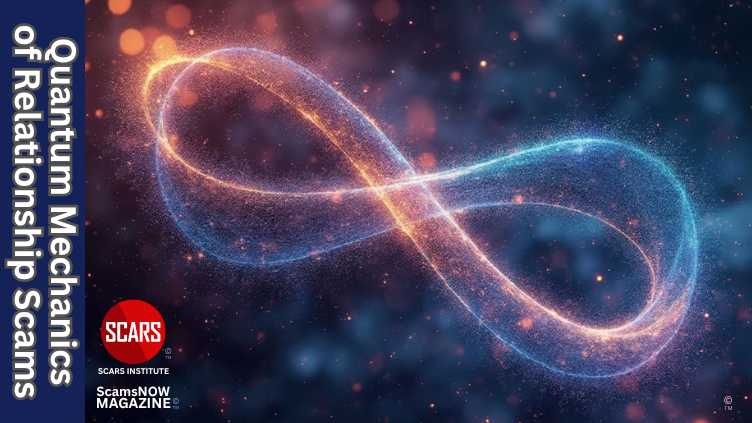

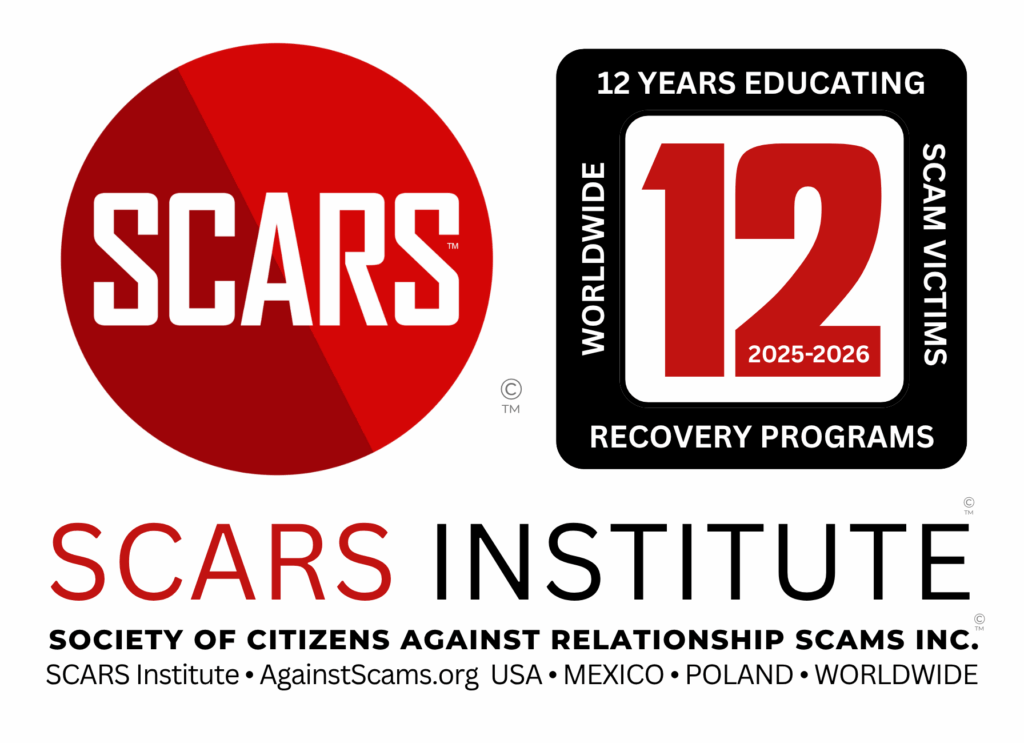


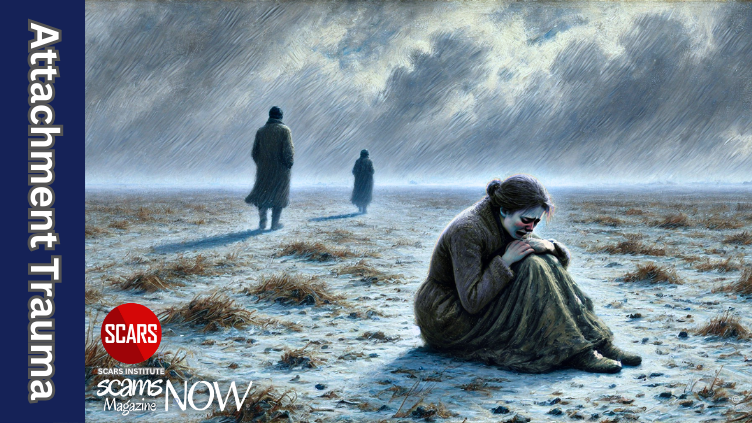



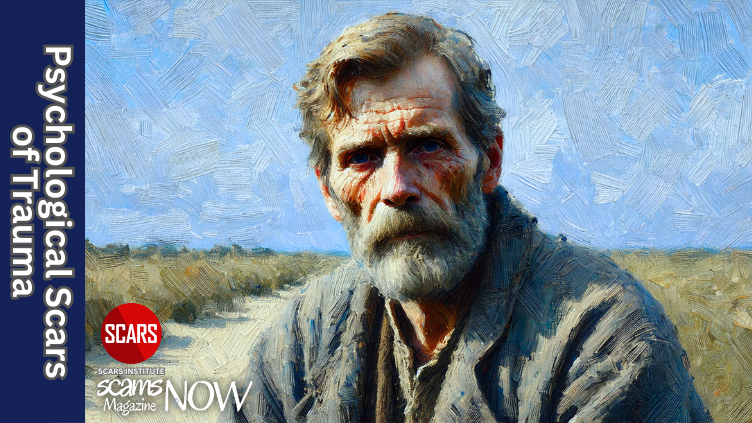
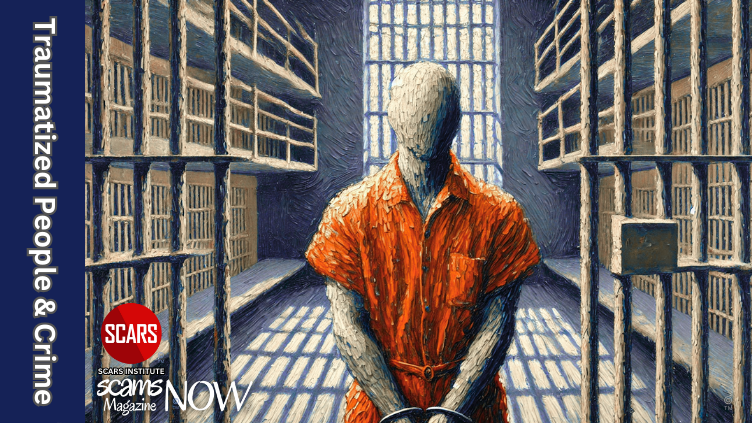


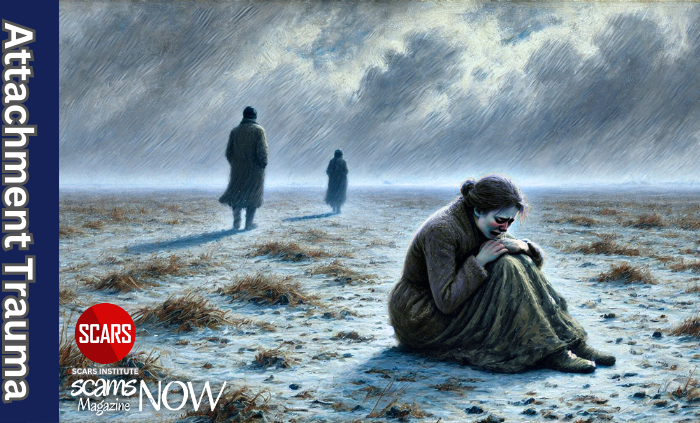
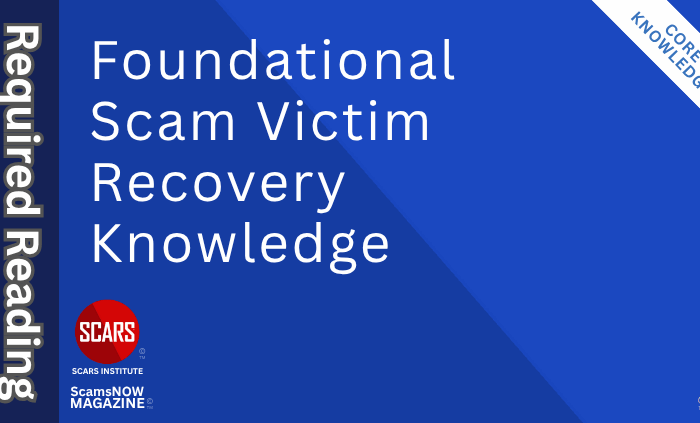

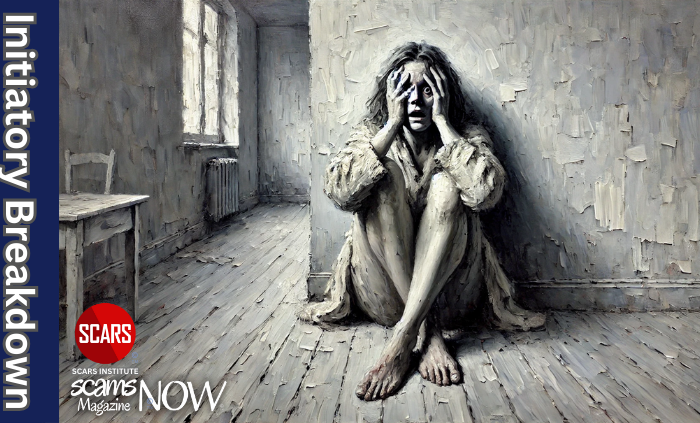
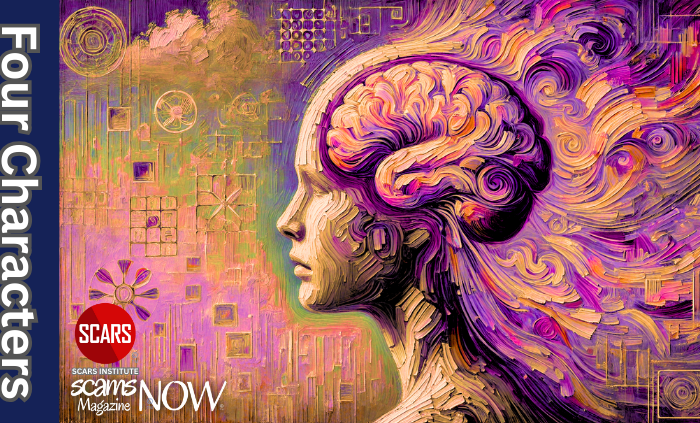




![scars-institute[1] Three Fates and the Scam Victim's Journey - 2025](https://scamsnow.com/wp-content/uploads/2025/04/scars-institute1.png)
![niprc1.png1_-150×1501-1[1] Three Fates and the Scam Victim's Journey - 2025](https://scamsnow.com/wp-content/uploads/2025/04/niprc1.png1_-150x1501-11.webp)
